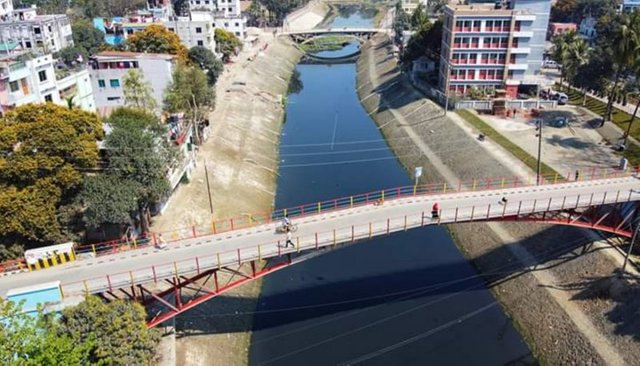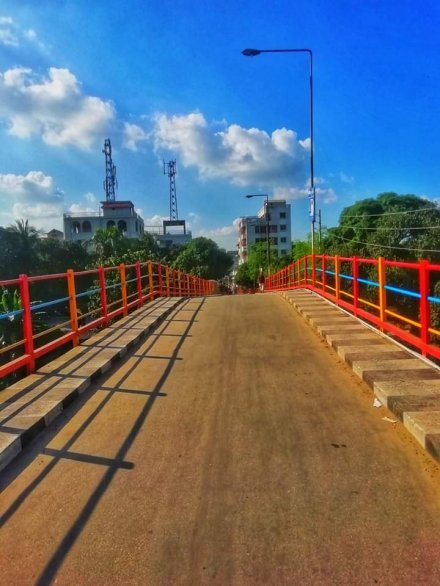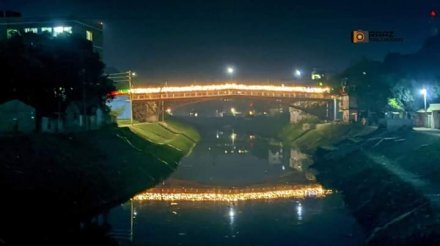Centennial Elliott Bridge: An installation that is part of the soul of Sirajganj
It is very difficult to find a person who lives in Sirajganj but does not sit on the Elliott Bridge. Although it is called Elliott Bridge, it is better known as Barapul to the people. Which has been filling the lack of recreation center in a mobsball city like Sirajganj for almost a hundred years.
The city of Sirajganj, which was built on the banks of the river Jamuna, was much smaller than it was supposed to be over time. The main reason for this was river erosion The city has been repeatedly threatened with extinction due to the terrible erosion of the Jamuna. As a result, no major architecture has been developed in this city, nor has the city become very large.

Source
There is no entertainment center in Sirajganj city due to being a mooseball. Recently, a crossbar (China Dam) built by the Water Development Board has been added to the river Jamuna as a recreation center. At the same time, the work of Russell Park has been completed for several years.
But before that there were only two places for people to hang out. Barapul and the banks of the river Jamuna, known as 'Hardpoint'. Apart from this, there is a picnic spot called Bangabandhu Jamuna Ecopark about 21 km from the city.
In the afternoon, the number of people at Hardpoint increases. Especially during a festival, the banks of the river Jamuna become the main focal point. But in the afternoon, when it became evening, the banks of the river Jamuna became almost deserted.
The Elliott Bridge is a favorite place for those who don't feel like sharing their grief by chatting with loved ones because of the busy schedule of the day. At night, young or middle-aged people hang out on thick iron railings in the light of neon lights - this is one of the most familiar scenes in Sirajganj.
But the fascination of Elliott Bridge is not just in the afternoon or evening. Standing along the middle of this high bridge in the morning, the gentle breeze that blows from the river Jamuna embraces the softness, it is enough to make anyone's mind feel good.
The Elliott Bridge was originally built over the Katakhali canal that runs through the heart of Sirajganj city. At one time, ships used to pass over Katakhali, but today its width is much less.
Even a few years ago, Katakhali was a closed narrow reservoir. But the city authorities can understand that Katakhali is a blessing for the city of Sirajganj. That is why the canal is being re-excavated with the help of the Water Development Board and efforts are being made to bring back its lost current. The work has already come a long way.
As a result of the excavation, Katakhali is slowly regaining its splendor. If the Water Development Board's project is 100% successful, then the Elliott Bridge can be arguably compared to the historic bridge over the River Thames in London, either in terms of urban beauty or the city's trademark!
Although the above words seem a bit exaggerated, it is pure emotion for the people of Sirajganj. If their dream of Katakhali comes true, a small town like Sirajganj could become a popular tourist destination in the country.
*History of Elliott Bridge
When the Jamuna was full of youth, Katakhali was also a torrent. As a result, Sirajganj city was then divided into two parts. The locals named the two parts 'Epar' and 'Opar' of Katakhali.
But traveling between the two parts was very problematic. Which necessitated a bridge to connect the two sides.
In 1892, Bitson Bell was the then Sub Divisional Officer (SDO) of Sirajganj. He planned to build a bridge overlooking the city of Sirajganj. At the same time, his goal was to solve the travel problem by connecting the two parks of Katakhali.
He sat down with the big businessmen of the city to make his thoughts a reality. Everyone supported his plan. After that they formed a committee and started collecting money.A grant of Rs. 1500 was collected from the district board. And the members of the committee formed with the businessmen gave their grants as much as they could.
Then the construction work of the bridge started. On 6 August 1892, Sir Alfred Elliott, the youngest son of Bengal, laid the foundation stone of the bridge. The bridge was built by British engineer Stuart Hartland. The bridge was built at a cost of Rs 45,000 at that time in his design.
Construction was completed in 1895. The bridge is named after Alfred Elliott. But now the locals call it 'Barapul'. Because even though there is a concrete bridge called wooden pool in the city, it is not bigger than the big bridge.
The specialty of Elliott Bridge is that it has no pillars. The 160-foot-long and 18-foot-wide bridge is arched entirely on both sides of the canal. And since it was built for a good view of the city, it is about 30 feet high.
The whole structure is made of a combination of concrete and steel. Due to its high altitude, large boats and ships used to pass under it. But now it doesn't work anymore. But Elliott Bridge still stands proudly since its creation.
The city authorities have made all arrangements to preserve this century-old architecture of Sirajganj. It has been closed to heavy vehicles for more than a decade It has also been reformed once. As a result, the young generation of Sirajganj is still able to sit and chat on this bridge.

